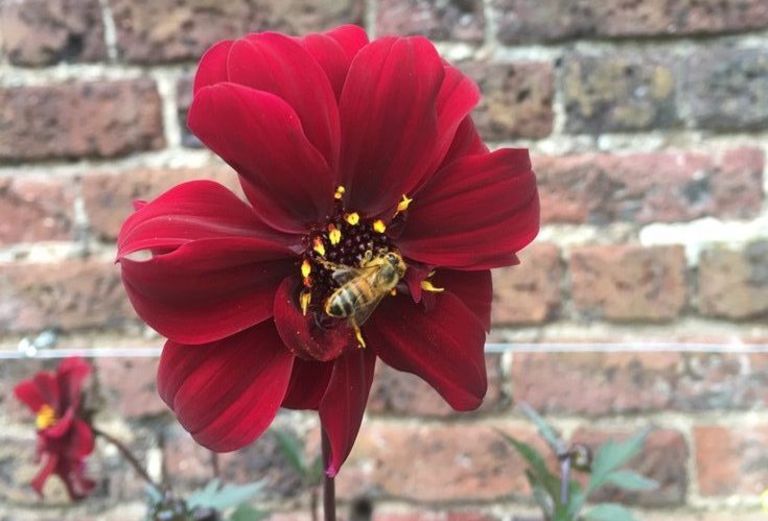
by Hattie Moore, garden apprentice
Now it is June, the rhubarb and asparagus plants are allowed to grow tall to recover from the harvest and the plentiful broad beans come to an end. The great flush of growth in spring is replaced by flowers and the harvesting of our vegetable successions. Volunteers exclaim when they see the changes in the garden after a week away from the Palace.
Summer can be seen most prevalently in the brand new “pollinators border”. The floriferous corridor runs alongside the trans-Atlantic apple orchard and the bee hives, giving our bees easy access to essential pollen.

Lucy Hart, our head gardener has ensured the planting consists of tried and tested pollinator favourites; such as hollyhock, Alcea rosea, larkspur, Delphinium sp., crane’s-bill, Geranium sp., dahlias, and lavender.
The border also has Fulham Palace’s iconic Echium pininnana and exciting varieties of day lily, Hemerocallis sp. bred by local breeder Jaco Nel. Over 45 different species of plants in the border will ensure a succession of flowers in bloom until late in the summer, we have avoided double or multi-petalled flowers to ensure the bees can access the pollen, and of course we never use pesticides within the walled garden. In contrast to the other new borders recently created at Fulham Palace, landscaping fabric has not been used to suppress weeds. Instead, the soil is mulched and the self-seeding of annuals like tobacco plant, Nicotiana sp., cosmos, and poppy is encouraged. It will mean extra weeding for apprentices and volunteers, but the explosion in annual plants next spring will be worth it.
Elsewhere on the grounds, look out for a new 5* bug hotel under construction in the newly seeded grass by All Saints Church, diligently constructed by garden volunteer Chris Warner.
